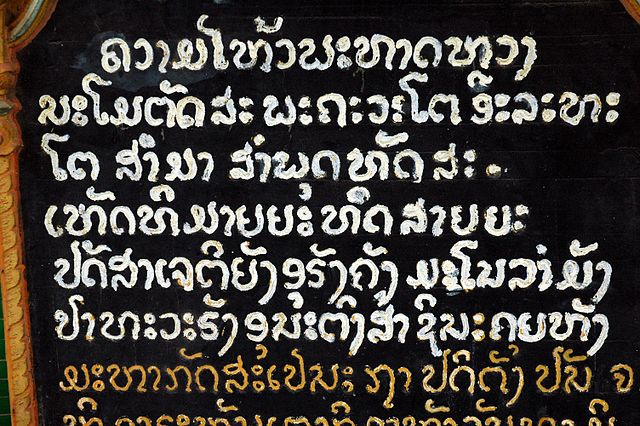Lao script or Akson Lao is the primary script used to write the Lao language and other minority languages in Laos. Its earlier form, the Tai Noi script, was also used to write the Isan language, but was replaced by the Thai script. It has 27 consonants, 7 consonantal ligatures, 33 vowels, and 4 tone marks.
Lao script on a sign at Wat That Luang, Vientiane.
These now-obsolete Lao letters were once used to spell words of Pali and Sanskrit derivation, but were removed, reducing the consonant inventory and the similarity of spelling between Thai and Lao.
Lao, sometimes referred to as Laotian, is the official language of Laos and a significant language in the Isan region of northeastern Thailand, where it is usually referred to as the Isan language. Spoken by over 3 million people in Laos and 3.2 million in all countries, it serves as a vital link in the cultural and social fabric of these areas. It is written in the Lao script, an abugida that evolved from ancient Tai scripts.
Wat Phra That Phanom in Nakhon Phanom. Built in the 16th century over earlier Khmer ruins when Isan was part of Lan Xang, the temple is an important place of pilgrimage, attracting Lao from Laos as well as Isan to its temple festivals.
Temple mural of Wat Photaram in Maha Sarakham Province. Dating to the reign of Siamese Ruler Rama III (1788–1851), the writing is in the Tai Noi script, an old form of the Lao alphabet.
A bilingual Lao-French street sign in Vientiane. Although the influence of French on the Lao language has waned considerably, hundreds of words of French origin are used in Laos.
Lao script on a sign at Wat That Luang, Vientiane.





